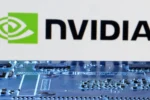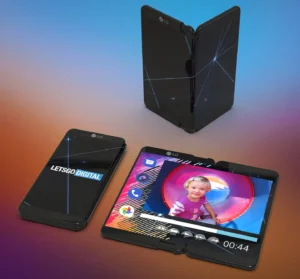Have you ever thought about switching tablets? I recently made the big leap from an iPad to an Android tablet, and it’s been an exciting adventure! Many people love their iPads, but I found out that the Xiaomi Pad 7 offers some amazing features that my iPad just couldn’t match. In this article, I’ll share five awesome reasons why I chose to switch and how my new Android tablet makes my life easier. From better multitasking to saving money, there are so many cool things about Android tablets that I can’t wait to tell you about!
| Reason | Description |
|---|---|
| Openness of Android | Android allows more customization, including installing apps from third-party sources and using different file managers. |
| Better Multitasking | Android tablets offer floating, resizable windows for multitasking, unlike the split-screen mode of iPadOS. |
| Multiple User Profiles | Android allows multiple user accounts on a tablet, making it easier for families to share a device. |
| Freedom from Ecosystem Lock-in | Android tablets can connect to various peripherals and services, unlike iPads that are tied to Apple’s ecosystem. |
| Cost-Effectiveness | Android tablets generally have lower repair costs and accessories are more affordable compared to iPads. |
The Freedom of Customization with Android
One of the best things about using an Android tablet is the freedom to customize it. Unlike iPads, which have a set look and feel, Android tablets let you change how everything appears. You can pick different wallpaper, choose unique icons, and even install special themes to give your tablet a personal touch. This means you can make your tablet look and work exactly how you want it, making it feel like it truly belongs to you.
Additionally, Android allows you to install apps from places other than the official app store. This means you can find fun and interesting apps that may not be available on the Apple App Store. Whether you want a specific game or a unique tool, the options are endless. This level of customization and flexibility makes using an Android tablet a fun and exciting experience!
Better Multitasking for Busy Lives
If you’re like me and often have multiple things to do at once, an Android tablet can be a game changer. While iPads allow you to run two apps side by side, Android tablets go a step further. With my new Xiaomi Pad 7, I can open several apps and move them around freely. This means I can watch a video while taking notes or chat with a friend while browsing the web, all at the same time!
This flexibility is perfect for kids and adults alike. It helps students study more effectively by allowing them to reference materials while writing. For parents, it means keeping an eye on messages while managing other tasks. The ability to multitask efficiently makes Android tablets a great choice for anyone who wants to do more with their device!
Affordable Options for Everyone
One of the biggest surprises about switching to an Android tablet is how much money I saved! Apple products are known for being expensive, and iPads are no exception. From buying the tablet itself to getting accessories and repairs, the costs can really add up. With Android tablets, there are many options at different price points, making it easier to find something that fits your budget.
For example, if something happens to your Android tablet, repairs are often cheaper than fixing an iPad. Even if you decide to buy a new one, there are plenty of affordable Android tablets that perform well. This means you can enjoy great features without spending a lot of money. For families, this can be a big plus, allowing everyone to have their own device without breaking the bank!
Enhanced Customization Options
One of the most appealing aspects of switching to an Android tablet is the enhanced customization options available. Unlike the iPad, which has a more rigid operating system, Android allows users to personalize their devices extensively. From changing the appearance of the home screen with widgets and custom launchers to modifying system settings and even the user interface, Android tablets provide an array of choices that let you make the device truly yours.
This level of customization doesn’t just make the device visually appealing; it also improves functionality. Users can prioritize the apps they use most, streamline their workflow, and tailor their experience to fit their specific needs. For example, creating shortcuts for frequently used apps, adjusting themes based on the time of day, or even automating tasks with apps like Tasker can significantly enhance the usability and enjoyment of using an Android tablet.
Superior App Ecosystem
When it comes to apps, the Android ecosystem offers a unique advantage. While the Apple App Store is known for its quality, the Google Play Store hosts a vast variety of applications, including many that are not available on iOS. This gives users the flexibility to explore niche apps and discover unique functionalities that suit their needs, particularly for productivity and creative tasks.
Additionally, the ability to sideload apps from third-party sources on Android tablets allows users to access even more applications that may not meet the strict guidelines of the Google Play Store. This freedom means that whether you are looking for a specific productivity tool, entertainment app, or something experimental, the chances are higher you’ll find it on an Android tablet, making it a more versatile choice.
Improved Integration with Other Devices
Switching to an Android tablet has also improved my integration with various devices. Unlike Apple, which often limits connectivity to its own range of products, Android tablets can seamlessly connect with a wider variety of devices from different manufacturers. This means whether you have a Windows laptop, a smart TV from another brand, or even game consoles, they can all work together harmoniously.
This flexibility extends to peripherals as well. You can easily connect your Android tablet to different types of printers, keyboards, and other accessories without fuss. This broad compatibility not only enhances productivity but also ensures you can use your existing devices without needing to invest in a specific brand’s product line.
User-Friendly Educational Features
Android tablets, like the Xiaomi Pad 7, often come equipped with educational features that make them ideal for learners of all ages. For instance, many Android devices include access to apps designed for education, such as interactive learning tools and gamified educational content. This accessibility makes it easier for students to engage with their studies in a fun and interactive way.
Furthermore, features like split-screen multitasking allow students to take notes while watching educational videos or conducting research simultaneously. This flexibility can enhance the overall learning experience, making Android tablets a practical choice for anyone looking to expand their knowledge or support their children’s education.
Frequently Asked Questions
What are the main differences between Android tablets and iPads?
The main differences are **customization**, **multitasking**, and **user profiles**. Android tablets allow more changes to look and feel, run multiple apps better, and support different users on one device.
Why is multitasking better on Android tablets?
Multitasking on Android tablets is better because you can use **floating windows**. This means you can keep apps open without splitting the screen, making it easier to switch between tasks.
What are user profiles and why are they helpful?
User profiles let different people use the same tablet with their own settings and apps. This is helpful for families, as each person can have their own space and privacy on the tablet.
Can I use my Android tablet with devices from different brands?
Yes! Android tablets are not locked to one brand, so you can connect them with devices from other brands easily. This gives you **more flexibility** to choose how you use your tech.
Why are Android tablets cheaper to maintain than iPads?
Android tablets are generally cheaper to fix and buy accessories for. Repairs and products for iPads can be very expensive, while Android options are often more affordable.
What does it mean that Android tablets are open-source?
Being **open-source** means you can customize and change your Android tablet more freely. You can install different apps and change settings, unlike iPads which are more limited.
Is it easy to transfer files on an Android tablet?
Yes, transferring files on an Android tablet is easy! You can use **USB-C** connections and move files without many restrictions, making it simpler than on an iPad.
Summary
The content discusses the author’s switch from an iPad to a Xiaomi Pad 7, highlighting key benefits of the Android tablet. It emphasizes the superior openness of Android, allowing for extensive customization and easier file management. Additionally, the multitasking capabilities on Android are presented as more flexible, with features like floating windows. The ability to create multiple user profiles is noted as a significant advantage for family use, while the lack of ecosystem lock-in is praised for its flexibility with peripherals. Lastly, the content points out that Android tablets are generally more cost-effective to maintain than iPads.








